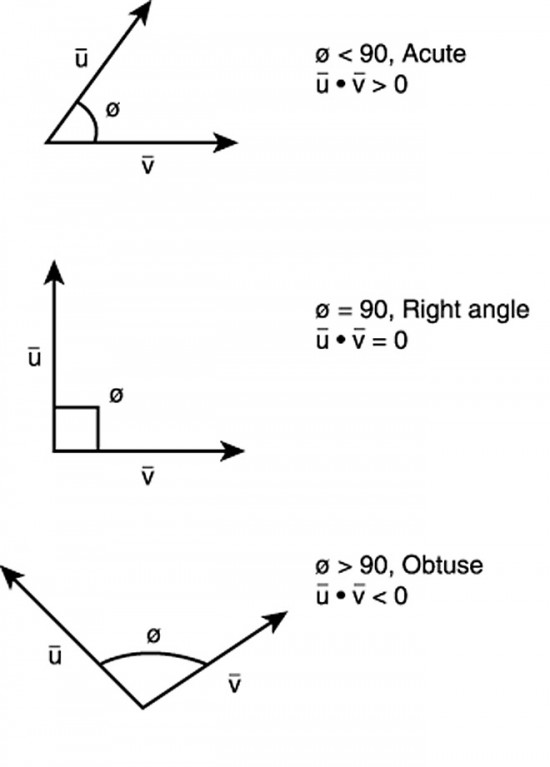Vector algebra is formulated to handle vectors; i.e., quantities with both magnitude and direction. Normal algebra, geometry and trigonometry are efficient at dealing with scalar quantities, that is, those with only magnitude, but are inefficient at handling vectors. Vector algebra is an efficient way of solving 2D and 3D problems involving vectors without the need for cumbersome geometry.
The electro-magnetic (e/m) field is a vector field of forces acting on charged objects. As forces are vector quantities (forces acting in an associated direction), the e/m field equations involve vectors.
Vector algebra can be formulated for Cartesian, cylindrical and spherical coordinates. Appropriate choice of coordinate system for cylindrically or spherically symmetric problems avoids needless complexity arising from the use of an inappropriate coordinate system and will also clearly show the symmetry of the solution.
Two important results of vector algebra involve multiplication of vectors. Vectors will be indicated by bold text.
The dot product (or “scalar” product) A・B (read as “A dot B”) is defined as ||AB|| cos(θ) where A and B are the magnitudes (numeric values) of the vectors A and B respectively and θ is the angle between them. Note that the dot product is a scalar quantity ( a simple numeric value (magnitude) without an associated direction), and geometrically is in a single plane (i.e., 2D). If the angle between two vectors > 90° then the scalar is negative (<0). If two vectors are perpendicular to one another, their dot product is zero.
The cross product A×B (read as “A cross B”) is defined as AB sin(θ)an, where an is the unit vector normal to the plane of A and B. Note that the cross product of two vectors is also a vector and its direction is orthogonal (perpendicular) to both A and B; i.e., the resultant vector involves a third dimension compared to the 2D plane containing the first two vectors.
Vector algebra defines another important operator, Del, or Δ. Del is analogous to the differential operator D in calculus where D represents the operation d/dx. Two further results using Del are important in analyzing e/m fields.
Δ・A or Div A is the divergence of the vector field A. The divergence is a scalar and is similar to the derivative of a function. If the divergence of a region of a vector field is non-zero then that region is said to contain sources (Div A>0) or sinks (Div A<0) of the field. For example, an arbitrary closed surface around an isolated positive charge in a static electric field contains the source of the electric flux, that is the positive point charge; therefore the divergence of the electric flux density vector field over that surface will be positive, and equal to the enclosed charge. This is Gauss’ Law. (see Appendix II, e/m field equations)
Note that Div A involves a dot product and is therefore dependent on angles. The angle is usually that between the vector and the normal to the surface being analyzed.
Δ×A or Curl A is the curl of the vector field A. The curl of a vector field is another vector field which describes the rotation of the first vector field; the magnitude of Δ×A is the magnitude of the rotation, and the direction of Δ×A is the axis of that rotation as determined by the right-hand rule. If one imagines any 3D vector field to represent fluid flow velocities, then the curl of the field at a point would be indicated by the way a small sphere or a paddlewheel placed at that point would be rotated by the flow. In a 2D flow it is easy to see that the direction of the axis of rotation of a circle (the 2d analogue of a sphere) in the flow will be in the third dimension, as is given by the use of the cross product in calculating the curl.
Additionally, the Del operator can be applied to a scalar field V. ΔV or Grad V is a vector field defining the gradient of the scalar function V. ΔV lies in the direction of the maximum increase of the function V. If applied to a potential function, then Grad V is a vector field that is everywhere normal to the equipotential surfaces.
Two useful properties of the Curl operator are:
(1) the divergence of the curl of any vector field is the zero scalar; i.e., Δ・(Δ×A) = 0
(2) the curl of a gradient of any vector field is the zero vector; i.e. Δ×(Δf) = 0 for any scalar function f dependent on position, as in f(x,y,z)
Example: To visualize (2), think of a scalar field such as an area of hilly land, where contours of constant elevation above sea level are “drawn” along the ground. Elevation “h” at any given point (x,y,z) would then vary with position, so its function is h(x,y,z). The gradient del(h) would be a vector that points, starting at the point (x,y,z), perpendicular to the contour line through (x,y,z) and straight “down the hill”. Imagine the way water flows downhill, or which way a marble would roll, and that’s the direction the gradient vectors point, always perpendicular to the equal-elevation contour at any point. Because these vectors are straight, they have no curl, or bend. That’s why, mathematically, ‘del × (del h) = 0′.
In practice, this means that an electric field in which the lines of flux are straight (e.g., between the layers of a plasma double layer or a capacitor, ignoring edge effects where the lines are not straight), a charged particle will be accelerated from rest in a straight line: the electric field has no curl.
Vector algebra becomes even more important in analyzing particle interactions when several forces may be present, as when a charged particle enters both an electric field and an associated magnetic field simultaneously, at an oblique angle so that its motion vector can have one component normal to the field lines and another (“drift”) parallel to them. The Mathematica©-based images in Chapter 4, ¶4.3, are indicative of some of the complexities of such interactions using only 1 particle. Plasma are double digit orders of number of particles higher than this simplest case, and the feedback mechanisms and complex particle motions that develop cause the plasma to create and maintain charge separation, to separate bodies with one electrical field potential from a volume of differente potential, to initiate current flows, to accelerate particles to relativistic velocities and radiate strongly, to pinch and roll up current sheets into filamentary conducting plasma structures like lightning, coronal loops and galactic jets.















